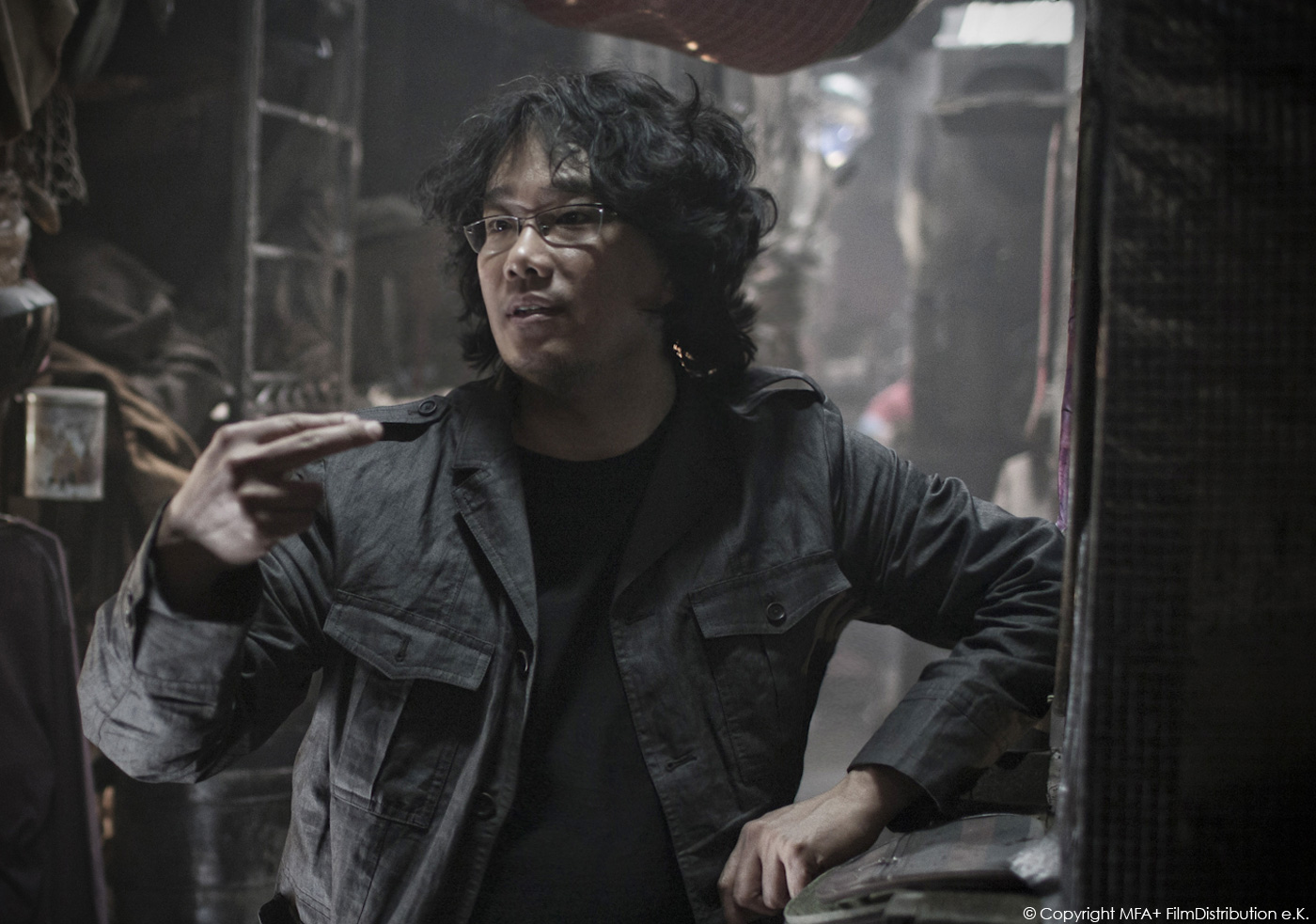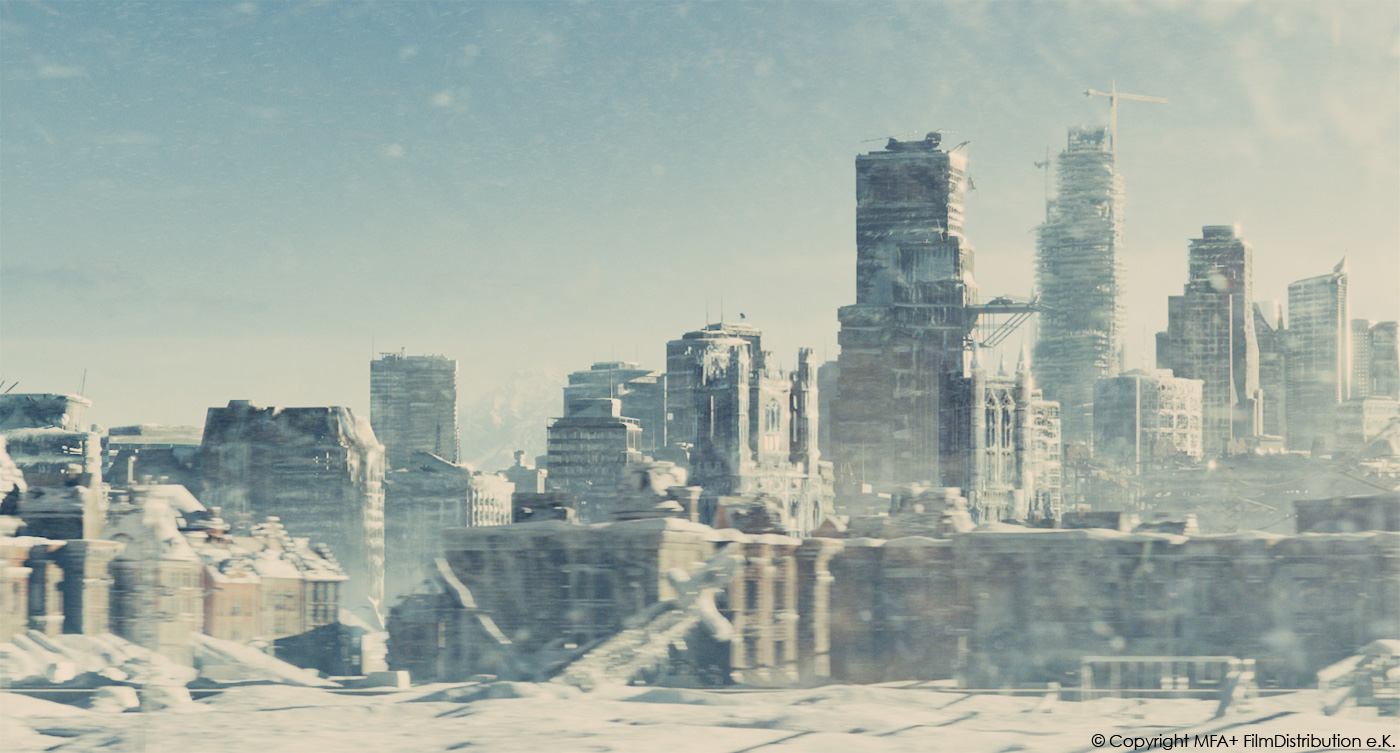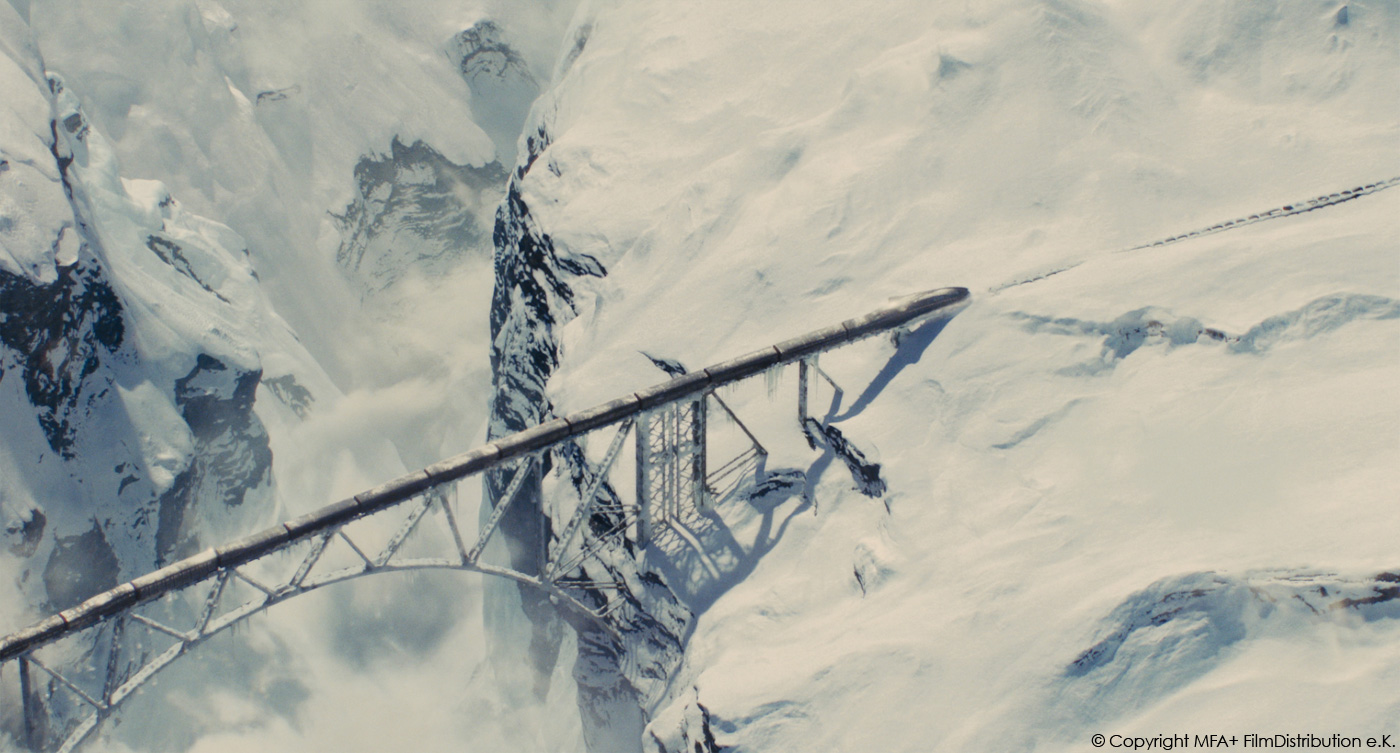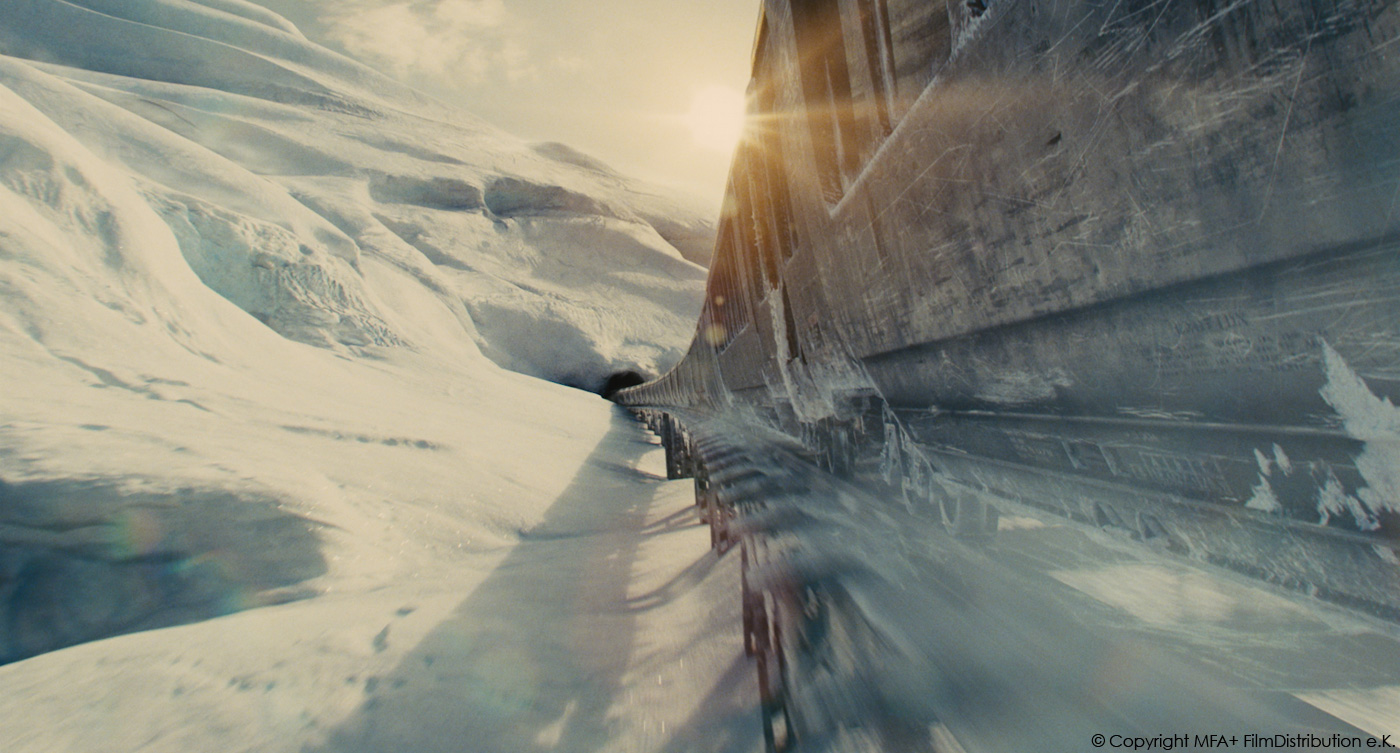In 2004, Michel Mielke started as VFX-Producer at Scanline, working on projects like 2012, PIRATES OF THE CARIBBEAN: ON STRANGER TIDES or Marvel’s THE AVENGERS. In 2012, he became VFX Supervisor, for projects like LOOPER and SNOWPIERCER. He’s now Head of Production since spring 2013, supervising all inhouse producers and taking care the daily business.
How did Scanline VFX get involved on this show?
Eric Durst, the Visual Effects Designer for this show already knew our L.A. office very well. Due to the fact that Scanline VFX is specialized in dynamic FX simulation (fluids, fire, smoke, snow), we were his first choice for the avalanche sequence. Since the movie was shot in Prague, he contacted us in Munich and visited the office during Pre-Production to meet the team and discuss a couple of sequences with us. We were able to show not only our FX work but also our environment work and some of our hard surface shading (airplane, helicopters…), so he had the feeling Scanline VFX might be a good choice for building the train and creating some of the full CG exterior shots. A few weeks later we went to Prague to meet with director Bong and his team. In this meeting we discussed the book and the visual approach director Bong had in mind, and after the meeting we were official on board of the “Snowpiercer”.
How was the collaboration with director Bong Joon-ho and Production VFX Designer Eric Durst?
Primarily we have worked in close collaboration with Eric Durst. Since the show was shot in the Barrandow studios in Prague, which is only a 4-hour drive from Munich, we had the chance to visit the set frequently and meet with Eric and Director Bong in person while they were shooting. Once principal photography was done, director Bong travelled back to Seoul and Eric back to L.A.. From this point on, we had conference calls and cineSyncs with Eric in L.A., and he presented our work to director Bong in Seoul.
What was the approach about the visual effects?
When we started, we received a huge library of references and concepts from production. All heavy VFX sequences were storyboarded by director Bong, so we had a excellent basis for our work. Based on the storyboards, we’ve started with a rough previs for the full CG shots, and in parallel we created concept paintings for a number of key visuals to define the look and feel of the frozen landscapes before we actually started building the assets. This design phase was running in parallel to the principal photography (May, June, July 2012), so we could easily present the WIP versions to Eric and director Bong in Prague and had a very quick feedback cycle.
What have you done on this show?
We worked on most of the exterior shots of the movie: the frozen city (when the protagonists first see the outside world), the Yekatarina Bridge sequence, the Frozen Harbour landscape in the sushi lounge, the “Frozen Seven” in the school sequence, the industrial park in the shootout sequence and the whole end of the movie (avalanche and post crash environment).
How was one of your typical day on-set and then during the post?
Since we had to recreate most of the train cars in CG, I had to make sure we’re receiving all references and set data we need, and I had to double check with Eric if we need any additional elements like a clean plate, or GS elements of soldiers fighting each other. The principal greenscreen shots were quite easy – as mentioned before, we often visited the set in Prague, and they were very well prepared, so we only had to discuss the light situation for each sequence with director Bong and the DOP Kyung-Pyo Hong. But they had some very clever solutions for interactive light on location (for example for the shoot out in the industrial area), which made it much easier for us in the postproduction.
During postproduction we usually checked, if we received any new / additional feedback over night from Eric or director Bong. Then, we started with production meetings, going through the latest notes and planning the day. In the evening we usually had a cineSync session with Eric, discussing the latest submission and planning the next steps for the various shots.
Can you explain in details about the train creation?
When we started working on this show, there were already multiple designs and concepts for the various train cars. We used these and the construction plans of the live action sets as starting point and build over 60 different versions of waggons for the train. Some of them were suitable only for wider shots, others were needed for close-up’s, such as the train head, the pool car or the school car.
What the main challenge with the train?
The biggest challenge was the length of the train, and the number of cars we needed to handle. We build a very complex rig for the train to give our animators as much capabilities as possible. The rig managed that the train automatically followed the rails, that the motion of the waggons where simulated depending on the rails, that the waggons could be changed easily and so on.
Can you tell us in details about the environments creation?
Based on the previz and the approved concept paintings we’ve started working on the landscapes – since in most of the shots, the camera travels with the train, we had to build high detailed 3D environments. We’ve used Mudbox and Zbrush to create the snow, ice, and rock formations we needed in a very high resolution. In parallel, we tested a number of different ice and snow shaders to get the look and detail we had in mind. For the areas in the depths of the picture we used 2.5D matte-painings (BG mountains, skies, etc..).
What kind of references and indications did you received from the director?
As mentioned before, there was a huge library of designs, storyboards and concept paintings we received as kick of. It was very interesting to get this material, since we did not only see the final concepts, but the WIP stuff and the versions that were not approved as well. So we got a good idea of the vision of director Bong, we saw what he liked, and what did not work for the movie.
The train arrives on the Yekatarina Bridge. How did you create the bridge and the icy snow that blocks the way?
The biggest challenge was the design of the ice blocks, sitting on top of the tracks in this sequence – as you know, the train crosses this bridge once per year (which is the reason why they celebrate New Year every time they cross this bridge…) and each time the train collides with ice blocking the tracks – The question was, if they regularly cross this bridge, why are there still ice blocks on the tracks (since they’ve been destroyed last year). The idea was, that there might a very short period of time each year, where some of the ice is melting and creating the ice blocks on the tracks. The look should be a mixture of a frozen waterfall and molten wax. Since there is no real reference for this kind of look, it was a longer design-process to come up with something which shows this concept of frozen water / ice.
The sense of vertigo in this sequence is really intense. Can you tell us more about it?
The scale of the mountains and the bridge was quite extreme – we started with more or less real life scale (something in the area of 1000 – 2000m height for the bridge and the canyons), but this didn’t have the visual impact, we were looking for. So we created environments with much more depth (10’000m and more) to get this vertigo effect.
How did you manage the ice and snow animation?
We used different simulation software packages (our in-house FX simulation software Flowline, Thinking Particles, Fume FX) and decided on a shot-by-shot basis which software package works best.
The Frozen Seven have a beautiful look. How did you design it and created this specific and dramatic sequence?
Creatively the “Frozen Seven” sequence was quite a challenge because we needed to visualize the frozen people outside of the train, seen as POV from the kids in the school car. It was really tricky to find the right balance, to make the frozen figures readable in this snowy environment, to create an environment which looks hostile and freezing on the one hand but still has a certain elegance on the other. In the end I think these are some of the nicest shots we’ve created.
What was the most difficult environment to create and why?
Technically, some of the shots in the avalanche sequence were quite a challenge. Since some of these shots were quite long (up to 20 seconds), it took more time than usual to create new simulations / renderings of a new iteration.
Can you explain in details about the avalanche creation?
The avalanche sequence consists of 16 single shots – all of them are full CG, since there was no live action train footage or model elements we could use as basis. This gave us complete freedom to design this sequence in close collaboration with Eric and director Bong. Similar to the other sequences we started with a rough previs for all the shots and refined the animation as the show progressed. Based on the approved previs animation, we started building the environment for this sequence and started with the first rough simulations for the snow and ice colliding with the train.
The main challenge here was the look and feel of the avalanche. Most of the reel avalanches you find as reference are big clouds of snow – in a way these avalanches have some “beauty” and “softness” which is not really what we needed for this movie. The whole purpose of the avalanche was to destroy the train completely and show how it got wiped off the cliff. We needed something more brutal, more aggressive than the average atmospheric snow avalanches, so we decided to go more with the look of a rock slide, with big chunks of ice and snow crashing into the train, with some additional atmospheric elements to blend it all together. Most of the shots consist of 20-40 different 3D elements (snow, ice, atmospheric, landscape, train, debris, sparks, interactive light…) we gave to comp where we created the final look – some of the more complex shots are based on more than 60 different layers!
How did you handle the destruction of the train by the avalanche?
This was a combination of different techniques: keyframe-animated motion, rigid-body simulation and finite element simulations to make the deforming and destruction of the train as realistic as possible.
What was the biggest challenge on this project and how did you achieve it?
Really hard to say – so many cool shots and sequences, it is more the variety of shots and the challenge to design the different environments for this movie we are the most proud of!
Was there a shot or a sequence that prevented you from sleep?
Not really. Some of the shots were quite difficult but we always got great feedback from Eric and director Bong, so we always knew what to do to keep the Snowpiercer on track. The whole team was very dedicated to this show and it was sometimes a challenge, but we are very proud of the final shots, and can’t wait to see the movie in theatres.
What do you keep from this experience?
It was a great experience to work with director Bong on this show. I think he has a very unique style and it was a challenge to understand his ideas and visual approach.
We have worked for US shows such as Marvel’s THE AVENGERS or Roland Emmerich’s 2012, German TV and Feature movies, European Arthouse, Japanese commercials, so we already had an idea of different ways to tell a story. Once we had a feeling for director Bong’s visual style, it was great fun to be a part of this movie, and creating these huge environments for the show.
How long have you worked on this film?
We’ve started with the first designs and previs in May 2012 (in parallel to principal photography in Prague) and deliver the last final shots early March 2013, so roughly 10 months in total.
How many shots have you done?
Our work included 186 VFX-shots and nearly 50 of them were full CG.
What was the size of your team?
Over the whole period of production, we had a little more than 70 artists working on this show.
What is your next project?
Right now we are working on a show called BIG GAME. It is a Finnish movie, directed by Jalmari Helandar (RARE EXPORTS) with Samuel L. Jackson as U.S. President hunted by terrorists.
A big thanks for your time.
// WANT TO KNOW MORE?
– Scanline VFX: Official website of Scanline VFX.
© Vincent Frei – The Art of VFX – 2014








